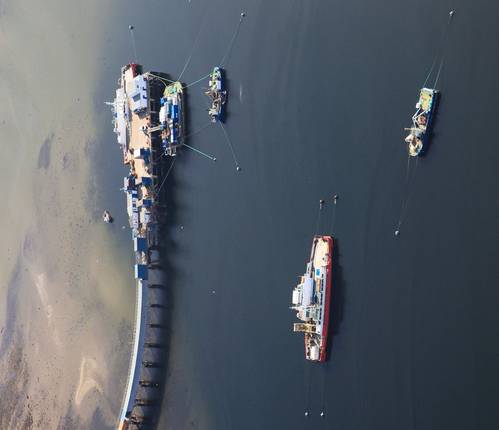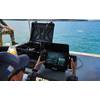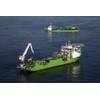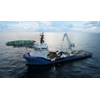Subsea Training Center Revamps ROV, Bell Courses
New modules added with support from industry. Students undertaking ROV Pilot Technician and Closed Bell training at the Fort William-based subsea facility, The Underwater Center, are to benefit from newly revamped courses providing even more contextual modules.
The Center has been working with industry to identify areas of its ROV and Closed Bell training suites which can be enhanced and courses for the remainder of 2015 will reflect this with major developments across the board.
Students on the three-week ROV Pilot Technician Course will now benefit from entirely unique training elements including time on the Center’s Loch Sunart ROV vessel and training in the ROV electrical and mechanical workshops, features unavailable at any other facility.
Loch Sunart is the Center’s work class ROV support vessel fitted with an operational work class ROV, and this will provide students with invaluable first-hand experience in all areas of ROV operations and mobilisation, from launch and recovery to operating a suite of ROV navigation sensors as part of in-water practical exercises.
In addition to this, the Center has overhauled the seven week Premium ROV Course to include a condensed and more focused electronics module as well as introducing courses covering High Voltage and Electrical Safety Awareness, T4: Introduction to Titan 4 Manipulator Training, Fibre Optics, Working at Height, and experience using our VMAX Triton XL Simulator.
For the remainder of 2015 the HSE Closed Bell Courses will include a new practical introduction to using an SPHL (Self-Propelled Hyperbaric Lifeboat), practical introduction to bolt tensioning, Kirby Morgan Hat Users Course and the IMCA Diver Medic ticket, helping add to the competency of its students when they enter the industry.
These additional modules, which have been highlighted as important by industry organizations, ensure that the training provided keeps up with current practice, so when students leave they are familiar with key equipment.
Steve Ham, the Center’s General Manager, believes that by continuing to update and revise the courses they are providing students with the best possible contextual training throughout their careers.
“We have spent considerable time reviewing our ROV and Closed Bell offering and with the help of industry we have been able to identify areas where we could strengthen our training packages,” he said.
“What sets The Underwater Center apart from other training establishments is that all of the vital practical activities undertaken occur within the context of real systems and equipment, in real environments, under real conditions and with real safety considerations at the forefront, all of which have a direct correlation to the real offshore environment.
The award-winning Center, which trains students from all over the world, is also now able to provide pre-course support for students who may have concerns over their level of English.
Fedrick Ukab Labong, from Malaysia, took part in the three week Closed Bell Course after having an initial chat via Skype with the Center’s Diver Training Authority.
“We realized our English was weak but the Center staff and management were very helpful to assist us to learn the correct pronunciation of words, and even put a huge effort to ensure we received and met HSE standard for our Closed Bell and IMCA Assistant Life Support Technician (ALST) certification in English.
“However, after getting our badge, we realized having great English was not really a major problem because the Center staff had methods to deal with weak English language spoken and improve our English so we could pass the assessments.”
The Underwater Center is a purpose-built subsea training and trials facility and is based on the shore of a seawater loch, well sheltered by the surrounding mountains. The Center’s unique location allows it to provide year-round training and testing in an open-water environment, while still being centrally located in the largest town in the Scottish Highlands.
With access to depths of over 100 metres, it is the ideal location to perform realistic and industry-specific saturation and air diver and ROV pilot technician training, as well as providing a convenient location for subsea equipment trials.

















 February 2024
February 2024



